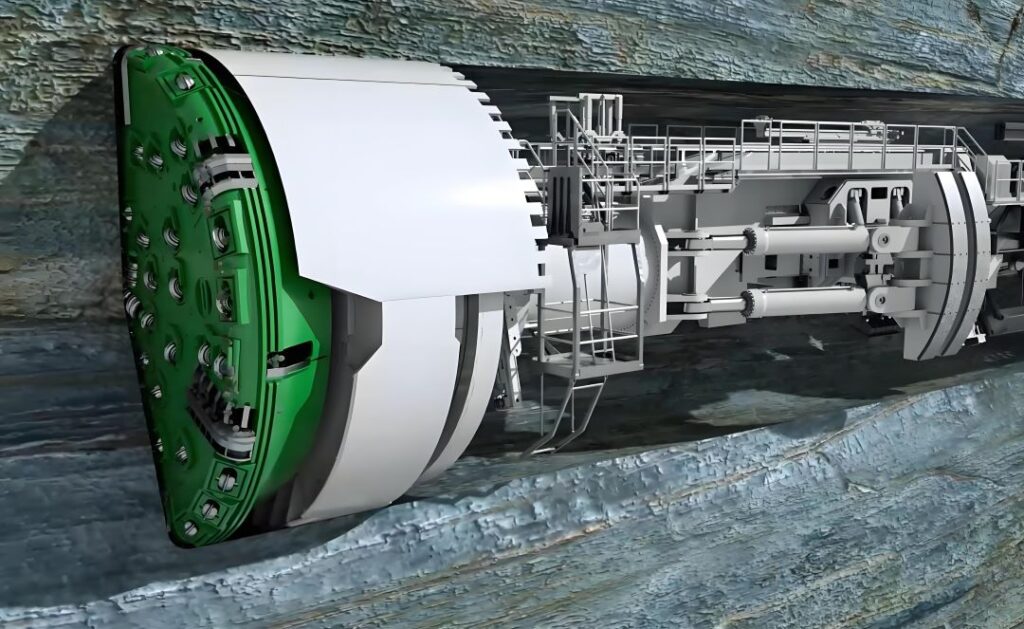Tunnel boring machine (TBM) is a large-scale special equipment that relies on the rotation of the hard rock cutter head to break rock and advance, while tunnel support and slag removal are carried out simultaneously, and the full-section of the tunnel is formed at one time. Its working principle is as follows:

Rock breaking: Disc cutters are installed on the cutter head of TBM. Under the action of thrust and torque, the cutter head presses against the tunnel face. The disc cutters revolve around the center of the cutter head in a circular motion, and at the same time rotate around their own centers. When the thrust exceeds the compressive strength of the rock, the disc cutters penetrate into the rock, and the tunnel face is squeezed and fragmented by the disc cutters to form concentric circular grooves in the tunnel. As the depth of the grooves increases, the surface cracks of the rock mass deepen and expand. When it exceeds the shear and tensile strength of the rock, the rock between adjacent concentric circular grooves peels off in flakes to form slag.
Slag removal: The cutter head rotates and shovels the slag into the slag chute through the scraper plate, and thus falls into the slag hopper and the receiving port of the main machine belt conveyor. It is transported to the tail of the TBM equipment through the main machine belt conveyor and the backup belt conveyor, and finally transported outside the tunnel through train marshalling or continuous belt conveyor.
Support: In poor strata such as fractured zones, temporary support needs to be implemented for the surrounding rock behind the cutter head. Mainly, rock bolts, steel meshes and steel supports are used to achieve temporary support for the surrounding rock.
Boring cycle: The boring cycle of TBM is alternately composed of boring operations and step-changing operations. During boring operations, extend the horizontal support and press it tightly against the tunnel wall, retract the rear support, start the belt conveyor. The cutter head of TBM performs a spiral motion composed of a combination of linear movement along the tunnel axis and unidirectional rotary movement around the axis. The broken rock falls from the bucket of the cutter head into the belt conveyor and is outputted to the rear. When the main propulsion cylinder reaches the maximum boring stroke, TBM needs to stop for step changing. At this time, the cutter head stops rotating, the rear support and the bottom shield support of the cutter head are lowered. The support shoes are slowly retracted and moved forward by one stroke. After the support shoes are moved forward in place, they are pressed tightly against the rock wall again and the rear support and the bottom shield support are retracted. Finally, the backup is pulled to move one cycle by operating the telescopic cylinder of the backup.
TBMs are sophisticated machines that revolutionize the way we construct underground infrastructure. By minimizing surface disruption and optimizing the excavation process, they play a critical role in modern tunnel construction projects around the world.





